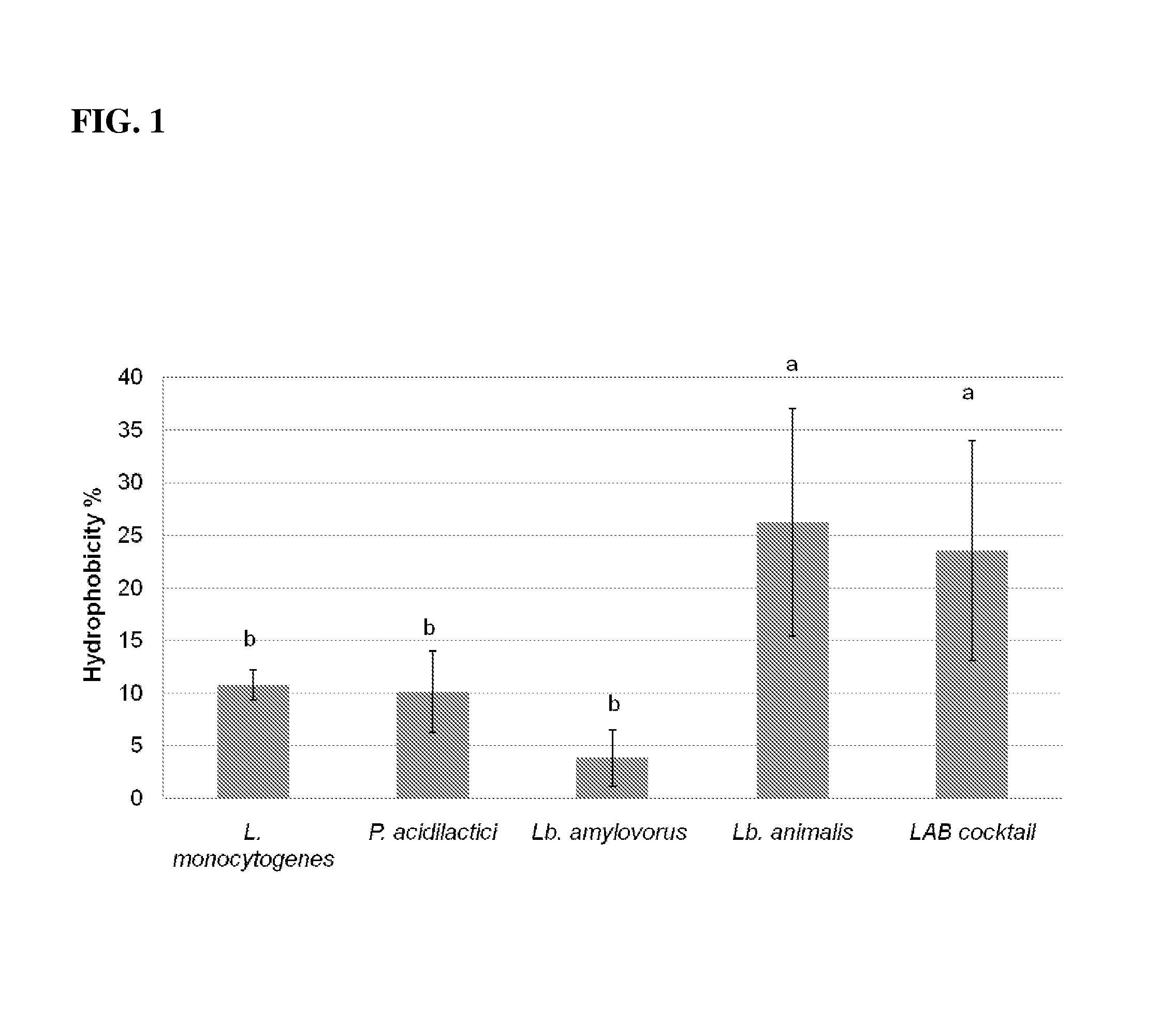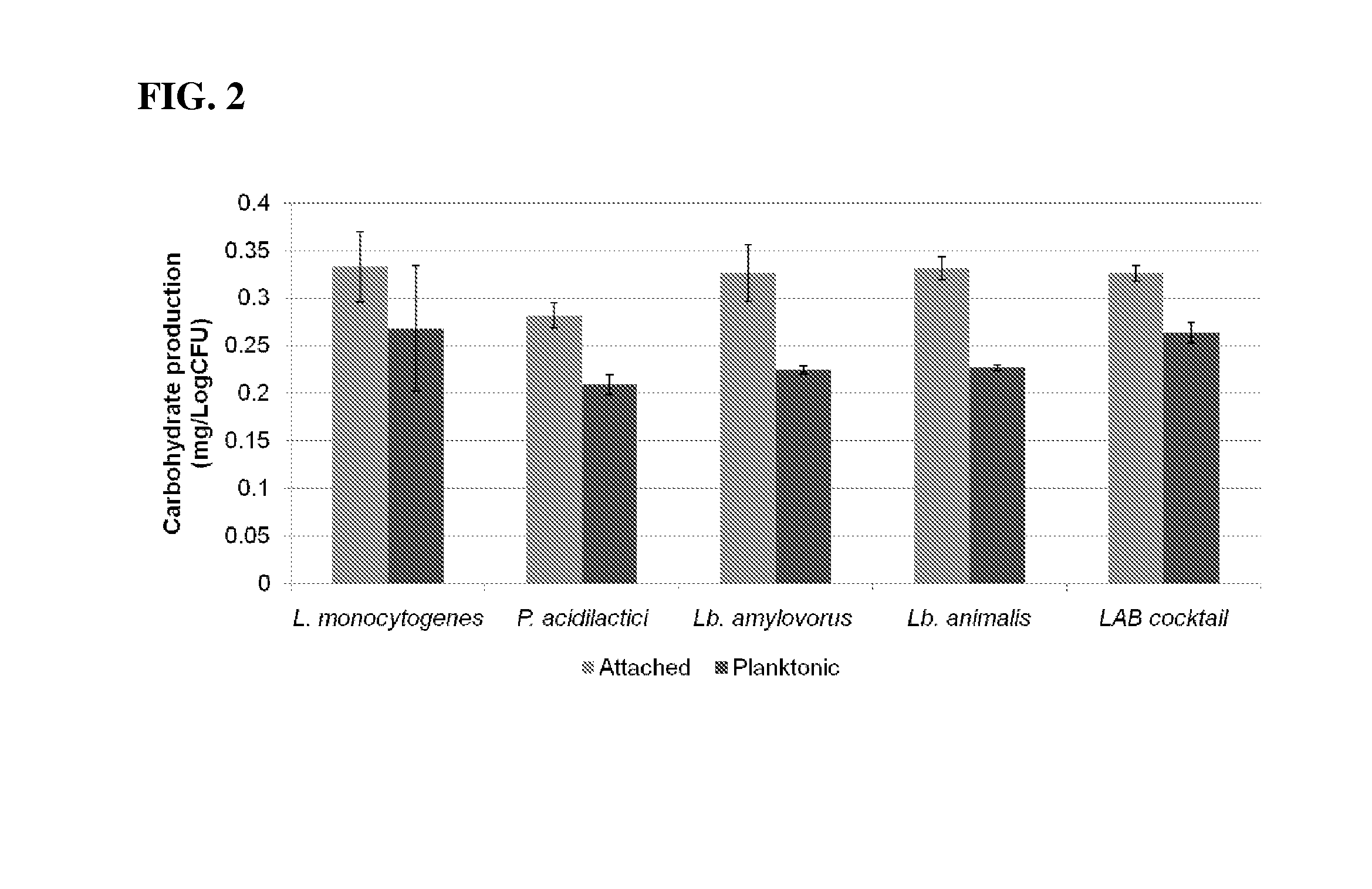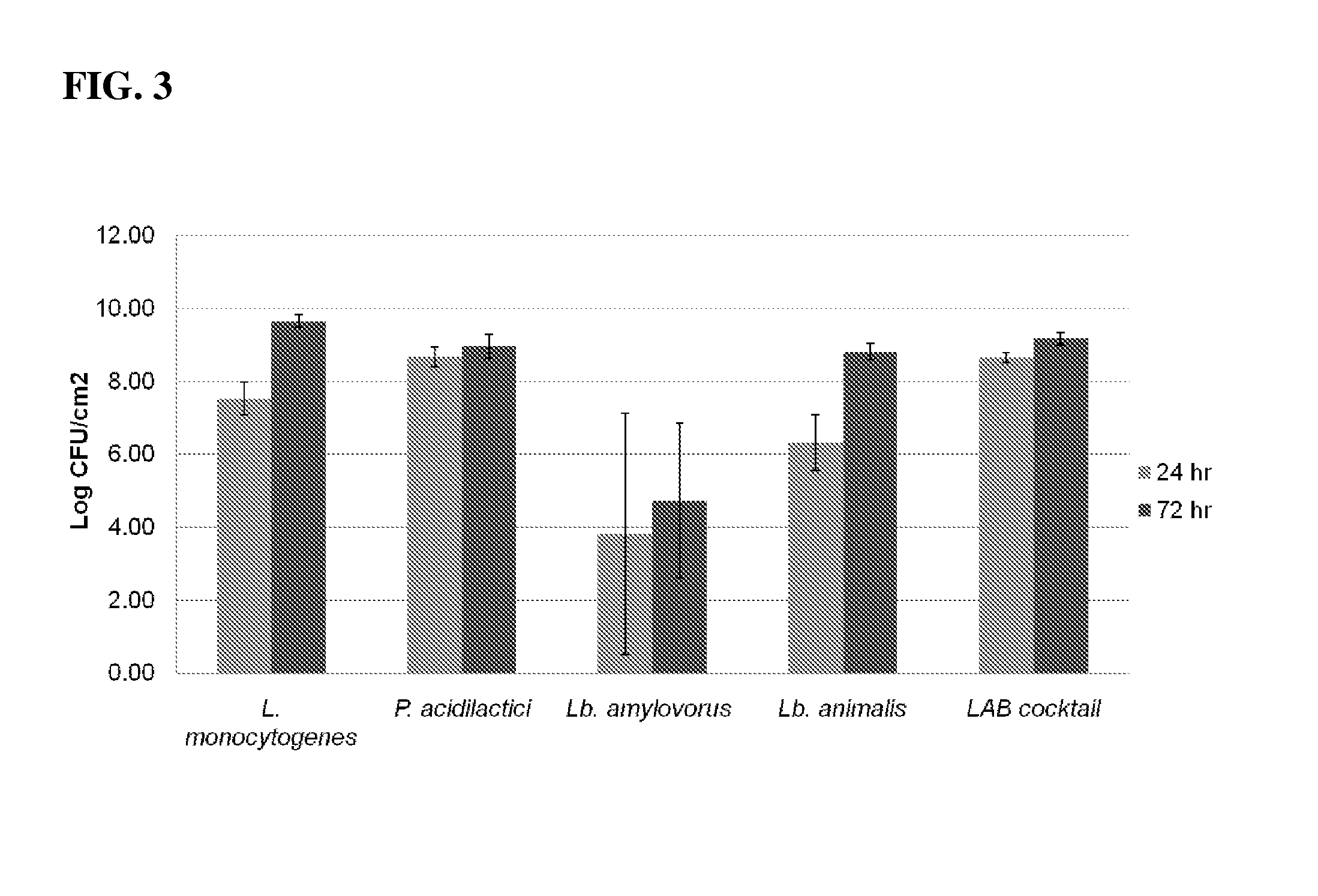Use Of Lactic Acid Bacteria To Reduce Pathogens And As A Bio-Sanitizer
a technology of lactic acid bacteria and pathogens, applied in the field of food safety compositions and methods, can solve the problems of pathogens posing life-threatening risks to humans and animals, pathogen contamination remains a big problem, and food contamination by pathogens is one of the biggest challenges, so as to reduce or eliminate enterobacteria
- Summary
- Abstract
- Description
- Claims
- Application Information
AI Technical Summary
Benefits of technology
Problems solved by technology
Method used
Image
Examples
example 1
Hydrophobicity of Lactic Acid Bacteria
[0065]In order to evaluate the ability of LAB s to competitively exclude L. monocytogenes by forming biofilm, the hydrophobicity of several LAB strains was evaluated to determine the potential effect of bacterial physiochemical properties on attachment (Nira et al, 2010). Previous studies have shown that more hydrophobic cells tend to attach better to various surfaces. It has also been shown that hydrophobicity of a bacterium may correlate with its capability to form stable attachment to the surface of food, such as deli meat (Bonaventura et al, 2007).
[0066]Each culture of the LABs and Listeria monocytogenes was grown from stock, streaked on solid media and incubated at 37° C. for 24 h for isolation of single colonies. Tryptic soy agar with 0.6% yeast extract (TSAYE) was used for L. monocytogenes and de Man, Rogassa and Sharp (MRS) agar was used for individual NP3, NP35 and NP51 strains. A single colony was placed in individual 5 ml tubes of TSA...
example 2
Measurement of Total Carbohydrate Production
[0068]Total carbohydrate production: L. monocytogenes and LAB strains were grown to stationary phase, washed by centrifugation three times and resuspended to an Abs 600 nm=0.32±0.04. The cell suspensions were deposited on sterile stainless steel coupons and were incubated at 23° C. for 3 hr. The attached cells were removed using a swab that was subsequently placed into PBS. The total carbohydrate produced by the bacteria was determined from the supernatant of the attached cell, and the planktonic cultures using phenol-sulfuric acid method (Chae et al., 2006). As shown in FIG. 2, the attached cells produced significantly higher carbohydrate than planktonic cells.
example 3
Inhibition or Exclusion of Listeria Attachment on Stainless Steel by LAB
[0069]Attachment of individual LAB strains and the 3-strain combination to stainless steel coupons was evaluated. The coupons were from a donated deli slicer which was cut into coupons measuring 2×2.5 cm using a Flow Waterjet Cutting System (Flow International Corporation, Kent, Wash.) at C. Mayo Sheet Metal. The coupons were washed, and autoclaved at 121° C. for 15 min before use.
[0070]Attachment / adherence of individual LAB strains (108 CFU / ml) as well as the 3-strain combination to stainless steel coupons were tested. The 3-strain combination, at 108 cells / well, was prepared and incubated at 23° C. for three hours to allow the bacteria to attach to the coupons. Bacterial cells were prepared as described previously in Example 1. Individual LAB strains, NP35, NP51 and NP3, as well as the 3-strain combination, were placed in separate wells of a 6-well plate. The concentration of the bacteria was about 108-109 CFU...
PUM
 Login to View More
Login to View More Abstract
Description
Claims
Application Information
 Login to View More
Login to View More - R&D
- Intellectual Property
- Life Sciences
- Materials
- Tech Scout
- Unparalleled Data Quality
- Higher Quality Content
- 60% Fewer Hallucinations
Browse by: Latest US Patents, China's latest patents, Technical Efficacy Thesaurus, Application Domain, Technology Topic, Popular Technical Reports.
© 2025 PatSnap. All rights reserved.Legal|Privacy policy|Modern Slavery Act Transparency Statement|Sitemap|About US| Contact US: help@patsnap.com



